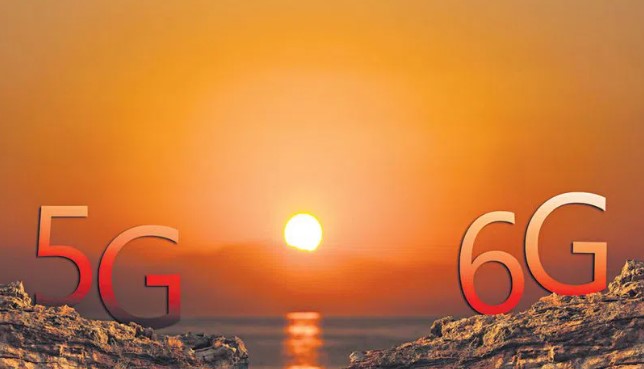Opinion: Cost of hyperconnectivity

By Cristina Cano Bastidas and Hug March Corbella
In the last two years, intense work has been done to deploy 5G networks (or 5th generation networks) in several countries around the world. Limited versions of this mobile network technology have been implemented so far, but it is expected to reach its full potential soon. And although mobile phone operators are still deploying it, it is already beginning to be considered what 6G networks should be like. This new generation could be operational in 10 years, taking over from 5G, in the same way that the predecessor generations have been doing.
Both 5G and 6G represent a technological leap aimed at increasing global hyperconnectivity, not only of people, but also of the objects that surround us. These networks will allow technological advances so that we have a deeper experience of our lives online: that we can, for example, transmit touch, or representations of our body through holographs or even impulses from our brain. And they will make it possible for practically everything around us to be interconnected.
The objective: to make our industries, agriculture, energy production, logistics or transport more efficient, to make life easier at home, as well as to open up new business models. In the most techno-optimistic imaginaries, there is talk of the positive effect that hyperconnectivity will have, counting on digitisation and artificial intelligence, in the search for (technological) solutions to the multiple environmental crises that we are experiencing through, above all, the use more resource efficient.
Material Impact
But this techno-optimistic view is missing something. When we think about the hyper-connectivity and the exponential growth of data transmission and processing that this vision promotes, it is difficult to see the material impact that this entails. On the one hand, the impact on different geographical scales (far from the points where these technologies are implemented and benefit from them) and on the other hand, in different temporalities (for example, future generations). The issue of energy and emissions is central in this regard. The growing implementation of new technologies goes hand in hand with an increase in total energy consumption.
Climate Emergency,Energy Crisis
It is urgent to take into account the energy consumption involved in maintaining the necessary infrastructure of telecommunications networks and data centres operational and serving an increasingly exacerbated consumption. This is even more important in a climate emergency context, when we are immersed in a convulsive energy market and with an increasingly conflictive energy geopolitics.
From the technology sector, trust is placed in new energy efficiency techniques to reduce consumption even though the demand for data increases. It remains to be seen whether these techniques will be able to offset the expected increase in demand.
But the impact is not reduced to a purely energy issue or direct emissions of greenhouse gases.More and more base stations, more antennas and more data processing equipment are going to be needed. In addition, the applications that guide the development of these technologies promote the acquisition of new user devices, such as mobile phones compatible with new generations of networks, virtual reality glasses, brain-machine interfaces and haptic extensions.
Manufacturing all these new infrastructures implies greater pressure in the extraction of materials, including rare earths and other minerals, more production, more transport and a greater number of wastes for which recycling is complicated. In addition to the geopolitical consequences, local conflicts and unequal distribution of wealth and the costs that this entails.
Democratic Debate
Given the fragile global socio-ecological situation, about to exceed or having already exceeded some of the planetary limits, we need to critically rethink the need for unlimited growth in data consumption. Can we, as a society, think of alternatives to the demand for more (digital) connection and (data) speed? Perhaps we can start by closing the digital gap, without creating new demands that imply ever greater consumption and higher speed.
Obviously, this requires a democratic debate that is not dominated by the impositions of the market. In turn, in the face of the most techno-optimistic discourses, it is necessary to evaluate the impact of the technological solutions themselves focused on mitigating environmental crises, taking into account the increase in demand for data and the need for equipment and new digital infrastructures that requires its implementation. We need to start considering digital equipment and infrastructure as a scarce commodity, with significant material and energy implications.
To alleviate the increasing pressure in the extraction, production, distribution of materials and equipment, as well as in the management of technological waste, it is necessary to reduce planned obsolescence, increase hardware modularity and extensibility , as well as future-proof design.
These directions of change are not only technological, but involve political and social interventions. It is important to democratise the debates on digitisation, and specifically on 5G/6G, to prevent technological development from being dictated only by market logic.
It is the task of civil society, academia and citizens in general to imagine other possible futures that do not go through the imperative of unlimited growth of digital consumption.

(Cristina Cano Bastidas is Associate professor (Computer Science, Multimedia and Telecommunications), and Hug March Corbella is Associate professor (Economy and Business Studies), UOC – Open University of Catalonia)







